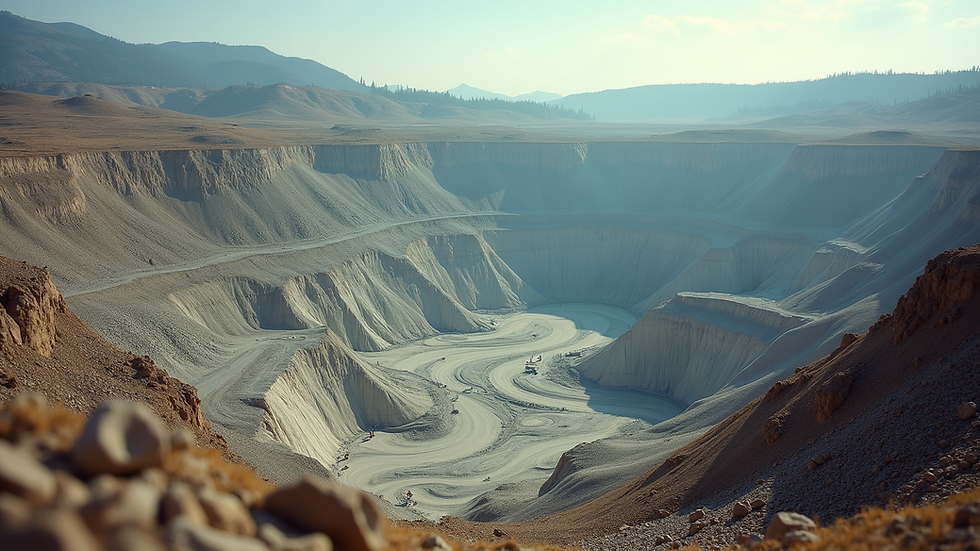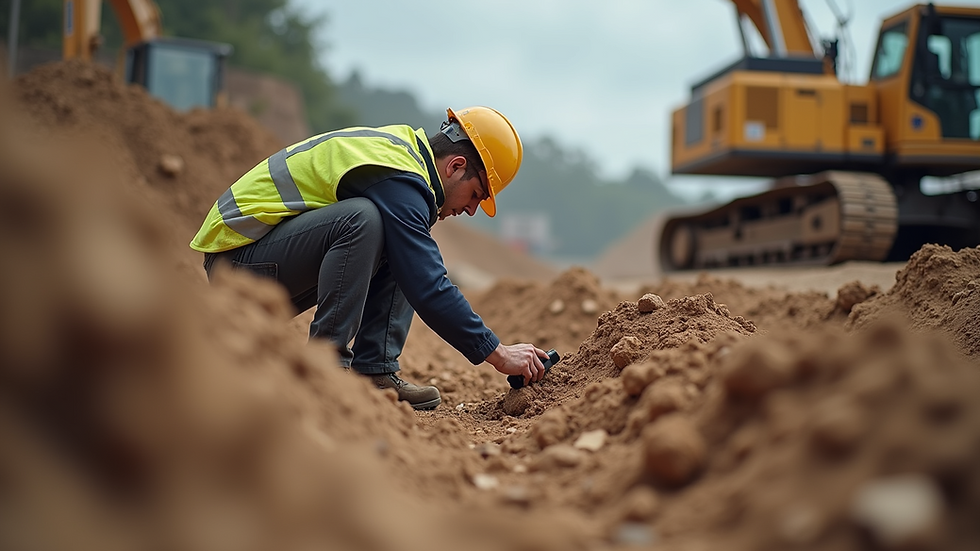Innovative Geotechnics and Geology Solutions for Sustainable Projects
- Karina Salatiel
- 27 de jul.
- 5 min de leitura
In today's world, sustainability is more than just a buzzword. It is a necessity. As we face climate change and environmental degradation, the construction and engineering sectors must adapt. Innovative geotechnics and geology solutions are at the forefront of this change. These solutions not only help in building resilient structures but also ensure that we protect our planet for future generations.
The integration of advanced geotechnical methods and geological insights can lead to more sustainable projects. This blog post will explore various innovative approaches in geotechnics and geology that contribute to sustainable development. We will look at real-world examples, emerging technologies, and the importance of collaboration in achieving these goals.
Understanding Geotechnics and Geology
Before diving into innovative solutions, it is essential to understand what geotechnics and geology entail.
Geotechnics is the branch of civil engineering that deals with the behavior of earth materials. It involves studying soil and rock mechanics to ensure the stability and safety of structures.
Geology, on the other hand, is the study of the Earth, its materials, and the processes that shape it. Understanding geological formations is crucial for any construction project, as it influences design, material selection, and overall project feasibility.
Both fields are interconnected and play a vital role in sustainable construction practices.
The Role of Innovative Solutions
Innovative solutions in geotechnics and geology can significantly enhance sustainability. Here are some key areas where these innovations are making a difference:
1. Sustainable Materials
Using sustainable materials is a cornerstone of eco-friendly construction. Innovations in geotechnics have led to the development of alternative materials that reduce environmental impact.
For example, geopolymer concrete is made from industrial by-products like fly ash and slag. This type of concrete has a lower carbon footprint compared to traditional Portland cement.
Additionally, recycled aggregates from demolished structures can be used in new projects. This not only reduces waste but also conserves natural resources.
2. Ground Improvement Techniques
Ground improvement techniques enhance the properties of soil to make it more suitable for construction. These methods can lead to more sustainable projects by minimizing the need for extensive excavation and material transport.
Dynamic compaction is one such technique. It involves dropping a heavy weight on the ground to densify the soil. This method reduces the amount of fill material needed and minimizes site disturbance.
Another innovative approach is geosynthetics, which are synthetic products used to improve soil stability. They can reinforce soil, control erosion, and even manage water flow, all while being lightweight and easy to install.
3. Smart Monitoring Systems
Technology plays a crucial role in modern geotechnics and geology. Smart monitoring systems can provide real-time data on soil conditions, structural integrity, and environmental impacts.
For instance, sensors can be embedded in structures to monitor stress and strain. This data helps engineers make informed decisions about maintenance and safety.
Moreover, drones can be used for geological surveys, providing high-resolution images and data without disturbing the environment. This technology allows for better planning and reduces the need for invasive exploration methods.
4. Sustainable Site Selection
Choosing the right site for a project is critical for sustainability. Innovative geological assessments can help identify suitable locations that minimize environmental impact.
Geospatial analysis uses satellite imagery and geographic information systems (GIS) to evaluate land use, topography, and natural resources. This data can guide developers in selecting sites that are less prone to natural disasters and have minimal ecological disruption.
5. Bioremediation Techniques
In cases where soil contamination is an issue, bioremediation offers a sustainable solution. This process uses microorganisms to break down pollutants in the soil, restoring it to a healthy state.
For example, phytoremediation involves using plants to absorb and detoxify contaminants. This method is not only effective but also enhances the aesthetic value of the site.
Real-World Examples
To illustrate the impact of innovative geotechnics and geology solutions, let’s look at some real-world projects that have successfully implemented these practices.
The High Line, New York City
The High Line is a prime example of sustainable urban development. This elevated park was built on a former railway line and incorporates various innovative geotechnical solutions.
The project utilized green roofs and native plant species to promote biodiversity. Additionally, the design included permeable paving to manage stormwater runoff effectively.
The Eden Project, Cornwall, UK
The Eden Project is another remarkable example of sustainable construction. This project features geodesic domes made from geopolymers and recycled materials.
The site also employs rainwater harvesting and solar energy to minimize its environmental footprint. The innovative use of local geology in the design enhances the project's sustainability.
The Bosco Verticale, Milan, Italy
The Bosco Verticale, or Vertical Forest, is a residential project that integrates nature into urban living. The buildings are covered with thousands of trees and plants, promoting biodiversity and improving air quality.
Innovative geotechnical solutions were used to ensure the stability of the structures while accommodating the weight of the vegetation. This project exemplifies how innovative geology and geotechnics can create sustainable living spaces.
Collaboration for Success
Achieving sustainability in construction requires collaboration among various stakeholders. Engineers, geologists, architects, and environmentalists must work together to develop innovative solutions.
Interdisciplinary teams can share knowledge and expertise, leading to more effective and sustainable designs. Regular communication and collaboration can also help identify potential challenges early in the project lifecycle.
Education and Training
To foster innovation, it is essential to invest in education and training. Professionals in geotechnics and geology should stay updated on the latest technologies and practices.
Workshops, seminars, and online courses can provide valuable insights into sustainable practices. Encouraging a culture of continuous learning will drive innovation in the industry.
The Future of Geotechnics and Geology
As we look to the future, the role of geotechnics and geology in sustainable projects will only grow. Emerging technologies, such as artificial intelligence and machine learning, will enhance our ability to analyze and predict geological behavior.
Moreover, the increasing focus on climate resilience will drive the development of new materials and methods. Sustainable practices will become the norm rather than the exception.
The Importance of Policy and Regulation
Government policies and regulations will also play a crucial role in promoting sustainable practices. Incentives for using eco-friendly materials and techniques can encourage developers to adopt innovative solutions.
Additionally, stricter regulations on environmental impact assessments will ensure that projects prioritize sustainability from the outset.
Embracing Innovation for a Sustainable Future
In conclusion, innovative geotechnics and geology solutions are essential for creating sustainable projects. By embracing new materials, techniques, and technologies, we can build structures that are not only resilient but also environmentally friendly.
The examples discussed in this post highlight the potential of these innovations to transform the construction industry. As we move forward, collaboration, education, and supportive policies will be key to unlocking the full potential of geotechnics and geology in sustainable development.
Let us continue to explore and implement these innovative solutions, ensuring a better future for our planet and generations to come.




コメント